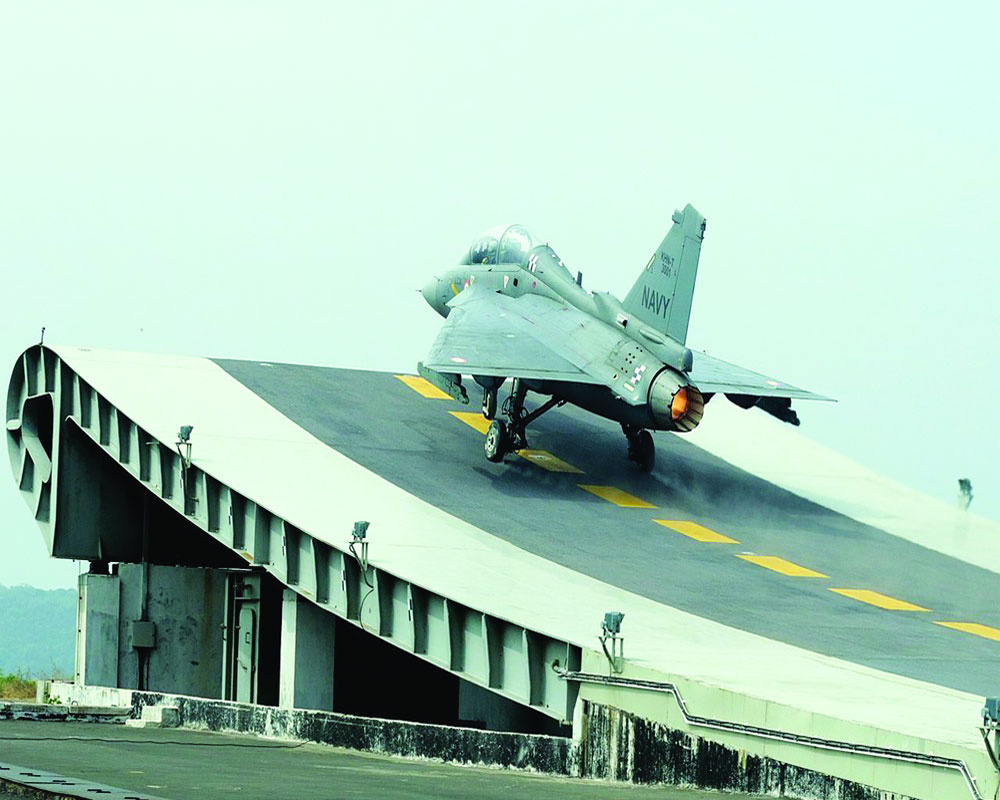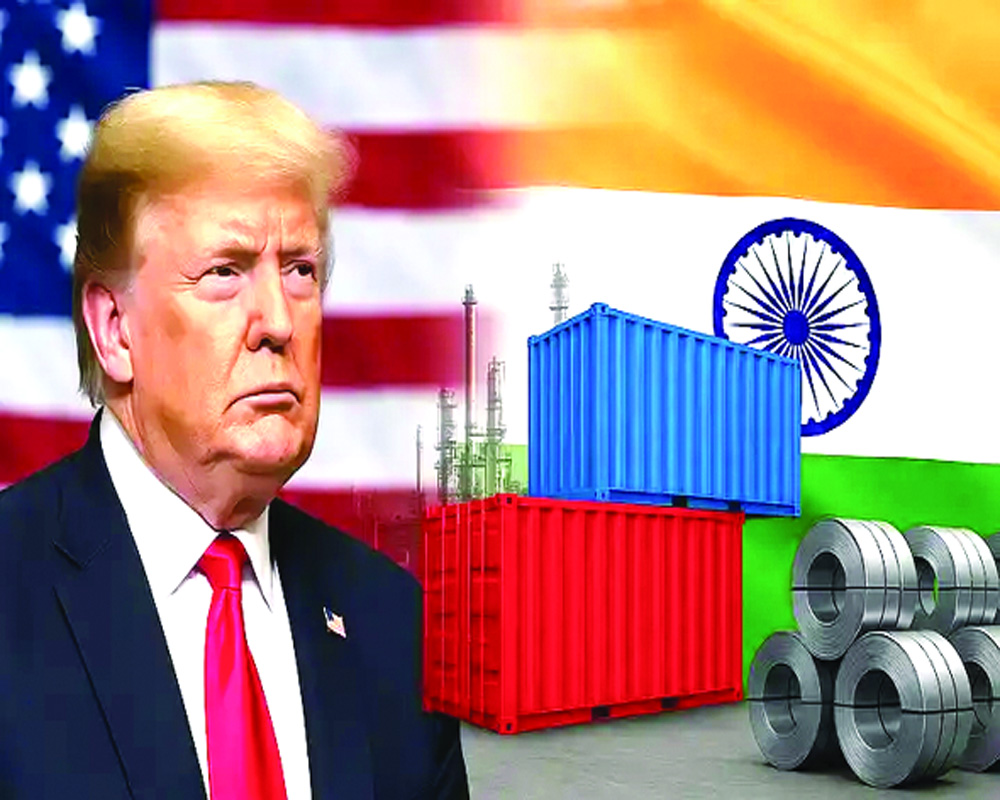
Self-reliance in defence could have the best advantages for us as, besides the economic benefits that will accrue, it will also result in strategic independence, which is a key ingredient of national security
Every war brings death and destruction in its wake. It also opens windows of opportunities for those who seek it. Though the global war on the COVID-19 is by no means over it has brought a host of opportunities with it. So, do we Indians continue to remain in the abyss of poverty or do we take a plunge into the new world that is opening up? It needs to be remembered that in the past, India was a leader in manufacturing. As per William Dalrymple’s book The Anarchy, in 1608, India “was producing about a quarter of global manufacturing; indeed in many ways it was the world’s industrial powerhouse and world’s leader in manufactured textiles.” Whatever happened thereafter is history and during the British rule, India lost the leadership role in manufacturing. We missed the Industrial Revolution and it had a telling effect on impoverishing India.
Thankfully, we did catch the train of Digital Revolution but the gains were not inclusive enough to pull us out of poverty. The opportunity that the COVID revolution is presenting needs to be grabbed with everything that we have. As Prime Minister Narendra Modi put across to the country, his vision of “Atma nirbhar (self-reliant)” India and rolled out financial packages to support the vision, many opportunities could open up, particularly in defence production.
India is one of the biggest arms importers in the world. In 2013-2017, India topped the list as it accounted for 12 per cent of the world’s arms imports. The US was the highest arms exporter amounting to 34 per cent of the global share. Even Netherlands, which is 79 times smaller in size than India, was the tenth-largest exporter of arms, accounting for 2.1 per cent of the global arms exports. Surely, a renewed Make in India will provide the country with unparalleled benefits. Self-reliance in defence could have the best advantages for India, as, besides the economic benefits that will accrue, it will also result in strategic independence, which is a key ingredient of national security.
Threat perception is mostly what drives force structuring and weaponisation. With the break-up of the USSR, the threat perception reduced significantly and it was possible for some European nations to scale down their armed forces. However, in the Indian context, the perceived threat from the Northern and Western neighbours does not appear to be reducing in the foreseeable future. While the spectrum and type of conflict that may manifest can be debated, what is of importance is that the preparedness has to be long-term in the interest of overall national security.
Though there has been indigenisation in the field of defence production for the last decade, its output has obviously not been as desired. Also, in terms of quality, there have been instances of the product not being suitable for combat conditions. One can take the case of the INSAS rifle with problems of moving parts and magazines. Time taken for developing a product is also important — as in the case of MBT Arjun.
Indigenisation for defence is simply not “Made in India” or “Manufactured in India.” To be successful, “Make in India” has to include the entire process and this includes: Identification of the weapon or equipment or platform to be manufactured; technology; design; patent/IPR and related issues; manufacturing ecosystem and operational maintenance and logistics.
Identification of the weapon/equipment/platform: Based on the threat perception and a long-term integrated plan, each weapon/equipment/platform is to be decided. This is an important process, needing strategic perception and long-term capability development and would be in the realms of the armed forces, with inputs from sources as desired by them. The process also includes formulation of General Service Qualitative Requirements (GSQR), which need to be realistic while meeting the operational requirements of the armed forces.
I am reminded of the days when I was serving in the Siachen glacier, in one of the most challenging posts, in 1992. Since our post was on an ice-wall and was partially under enemy observation, the helipad was located some distance away. Due to the restriction of the valley width as also very limited availability of landing ground, only the smallest helicopter, the Cheetah (French Allouette engine) could fly there. In its first sortie, with full fuel load, all that it could carry was either one man without his equipment or his equipment or a jerrican (20 litres) of kerosene oil.
I wondered at that time as a young Major, that, whereas a sizeable portion of our army is deployed in high altitude and super high altitude areas, why is it that we don’t have an Indian helicopter to meet our operational requirements? Through “Make in India,” we can achieve to get what we need for our operational conditions and not what some other country wants to sell, which could be quite unrelated to our requirements. No other country would be fighting wars in the varied terrain and other conditions that prevail along our borders.
Technology and Design: For the success of “Make in India,” the process of technology and design would probably be the most significant one. This applies equally to both, i.e. platforms made by large industries or smaller sub-systems manufactured by MSMEs. Technology must drive the equipment to be unfailingly combat-effective, be it a platform like the aircraft carrier, an aircraft, main battle tank; or a small part like the magazine of a rifle; each needs combat-worthy technology. Fortunately, India has enough technology experts in this field but their expertise needs to be harnessed in a highly organised manner.
A conducive ecosystem needs to be created, wherein they can contribute to national security as a matter of pride, while their individual aspirations are also taken care of. There is also a need to harness Indian technology experts who may have moved to the US/Europe or other countries, giving them the option of repatriating, including those who may have lost their jobs in the current situation. Alternatively, they could work on a project basis in India. An opportunity can thus be created for them to “give back” to their country which, in a large number of cases, would have given them basic education to achieve success.
There are, of course, products utilising very high-end technology, which may not be readily available. There is a need to acquire such technology leveraging India’s other strengths. For the long-term success of “Make in India,” such borrowed/acquired technology cannot be an answer. Dedicated investment must be made on R&D of short and long-term defence equipment requirements, taking advantage of the technology experts of the entire country, on a project basis. Such research projects and their byproducts could also be utilised for civilian purposes, in the long-term.
Patent/IPR: All existing patent/IPR rules/regulations must be fully implemented. Excellence/innovation needs to be honoured and rewarded. Even individual interests of scientists, where applicable, in relation to patents must be respected. Clauses of national security, where desirable can be enunciated.
Manufacturing Ecosystem: With the “Make in India” friendly packages announced by the Government, including items that cannot be imported, both large industrial houses and MSMEs have an unprecedented opportunity. However, to compete, their standards have to be really world-class. For long-term success, the manufacturing capabilities need to be upgraded where required, to supply fail-proof combat equipment. Promising manufacturing units, including start-ups, could be provided appropriate efficiency and output-based support.
Operational Maintenance and Logistics: In the varied terrain conditions that Indian Armed Forces operate in, including a major portion in high altitude and super-high altitude areas, operational maintenance and logistics would play a significant role. In situations where feasible, the original equipment manufacturer could take on the responsibility of logistics and sustenance. The design of the weapon/equipment must take into consideration the requirements of field maintenance in extremely challenging situations and terrain.
The 21st century has presented India with an unique opportunity, which could fulfil the requirements of inclusive growth as well as meet many other existing challenges. Through ‘Make in India’, the country gains strategic independence, the industry makes progress, jobs are created and most importantly the soldier gets indigenously-manufactured equipment meeting world standards.
(Writer: Aniruddha Chakravarty; Courtesy: The Pioneer)








 OpinionExpress.In
OpinionExpress.In















Comments (0)